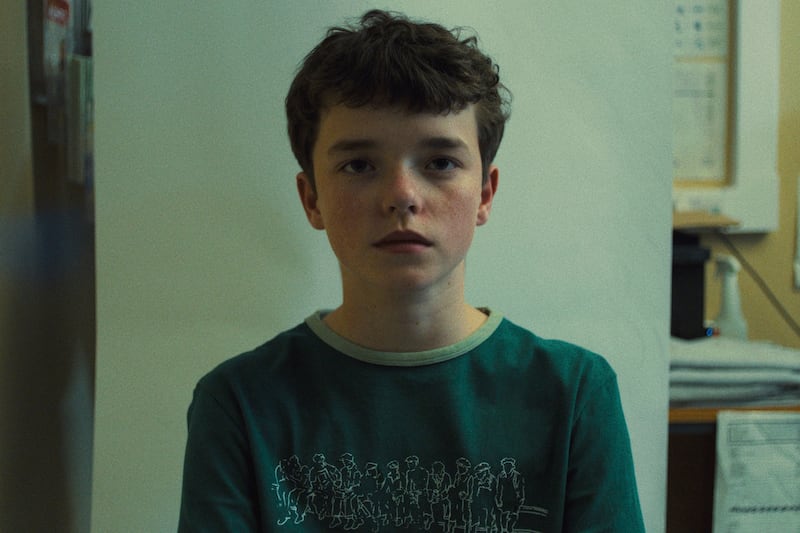We date the beginnings of “cinema” to around 1895. Enthusiasts will recall a rush of millennial documentaries celebrating the medium’s hectic journey through the succeeding century. But it took another two and a bit decades for the machinery of the American studio system to clank into fully geared action.
This month, Warner Bros Pictures, once the grittiest and brashest of the great studios, celebrates its own 100th birthday. It launched the sound boom with The Jazz Singer. It was the (not always happy) home of Bette Davis, Humphrey Bogart, Bugs Bunny and Joan Crawford. It formed a fecund – if occasionally stormy – relationship with Stanley Kubrick. In more recent years Warners gave the world The Matrix and a TV show called Friends.
Neil Jordan, talking to me two years ago, turned positively sunny when recalling his own relationship with the company. “Warner Brothers is the hallowed studio to me,” he said. “When you go to that lot. It’s like walking on sacred ground or something.”
Since the late 1920s, to locate that sacred ground, you must travel north from Hollywood and cross the concrete gutter that is the LA River into the city of Burbank – gateway to the San Fernando Valley. The famous water tower, emblazoned with the “WB” logo, stands in for steeple, minaret or dolmen.
That is not where we are headed today. To celebrate the official birthday, Warners has invited us to the archives at a (genuinely) secret location in another part of the conurbation. We drive down the twisty roads which killers once travelled to dump bodies in Columbo and find ourselves at a barn uncluttered with palm trees or swimming pools. George Feltenstein, a neat, enthusiastic man in horn-rimmed glasses, is there to walk us towards an orgy of iconography. Now into his 60s, Feltenstein, after a busy career, finds himself “Warner Bros Discovery library historian”.
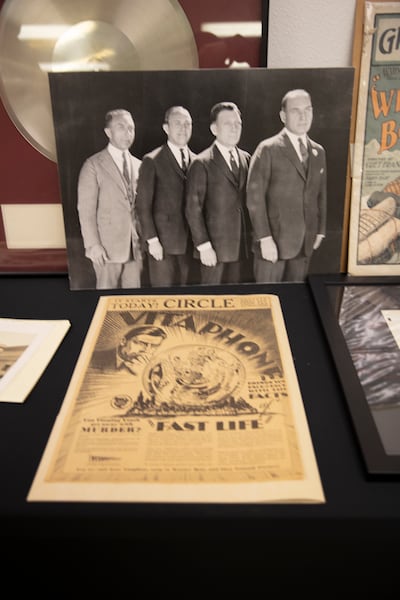
That job title hints at the convolutions Warners has gone through over the decades. Founded by the four brothers of that name – all, bar Jack, born “Wonsal” in what is now Poland – the company started out exhibiting movies in Pennsylvania and Ohio at the turn of the last century (for a good portion of its existence, Warner Bros acknowledged 1905 as its founding date). The firm began producing films during the first World War and formally incorporated as Warner Bros in 1923.
From the mid-1960s, like its rivals, Warners has been involved in business reorganisations of the most head-wrecking water. Jack Warner sold control to Seven Arts in the 1960s.
In the 1980s the company merged with Time Inc to become Time Warner. Ted Turner became involved in the mix. In this century, AT&T took over before a merger with Discovery Inc created the current Warner Bros Discovery.
[ Warner Bros Discovery eyes sale of music library to trim debtOpens in new window ]
Through it all, the relics over which Feltenstein now has dominion survived. That is something of a miracle. Many involved in the early industry thought they were in the ephemera business. They never imagined future generations would maintain an interest.
“To be completely transparent, I don’t think that they did,” Feltenstein says. “And a signal of that was that, in 1934, there was a bad fire on the lot. And most of the Warner Brothers silent films were destroyed. I don’t think they really took any other steps to further protect against that.”
He talks me through further tangled wires of ownership on the way to the current respect for the studio’s heritage.
“They funded renovation of the entire lot and the start of this corporate archive, and the saving of all of the costumes and everything,” he says. “There were certain things that strayed along the way. And they got back as much as they could.”
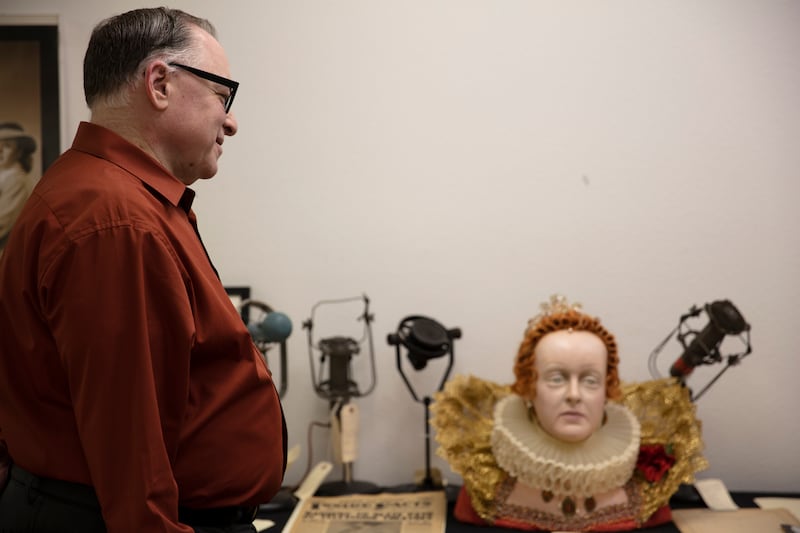
Feltenstein has pulled out an array of artefacts that offer waystations through the history of a great American art. “MINUTES OF FIRST MEETING OF BOARD OF DIRECTORS OF WARNER BROS PICTURES, INC” a framed document from April 6th, 1923 blares. Here is a poster of Rin Tin Tin, the dog whose silent adventures turned Warners into a viable concern. The pace really picked up with The Jazz Singer in 1927. That film, the first with both synchronised music score and lip-synchronous singing, was an immediate success and rendered a host of squeaky-voiced silent actors suddenly unemployable.
Feltenstein passes across an example of the master discs that would serve as “stamper” for the Vitaphone recordings used in cinemas. The death of Sam Warner, the third of the four brothers, on the day before the premiere of The Jazz Singer dampened the studio’s euphoria. Here is a telegram from the film’s star to Jack Warner, the brother who became the studio’s driving force. “When you lost one brother you found another one. Your loving brother, Al Jolson,” it reads.
Warners built on that pioneering success to become an unstoppable force in the depression years. The notion that each major studio had an aesthetic faded in later decades, but, during the 1930s and 1940s, movie fans knew what to expect from these brand names. MGM offered extravagance and fantasy. Paramount offered the spikier pleasures of The Marx Brothers, WC Fields and Marlene Dietrich. David Thomson described the Warners style as “tough, routinely black and white, gangster pictures, hard-boiled musicals, adventure, costume and a political undertone”.
In 1932, The Public Enemy, a rough gangster flick made before the “production code” stamped down on sex and violence, turned Jimmy Cagney into the studio’s biggest star. Humphrey Bogart came along later as the industry’s power and influence grew. The lot in Burbank became something of a city state. You could go to the dentist, have your hair cut and enjoy a meal without having to leave its borders. “Being at Warner Bros is like being at Warner Bros, not in the United States,” film composer Bronislau Kaper said. “That’s like extraterrestrial. It’s a different country.”
By this stage, the studio system had formed itself into an unprecedentedly efficient mechanism for generating what fools now call “content”. The top stars were well rewarded, but had to spend their money while constrained by golden shackles.
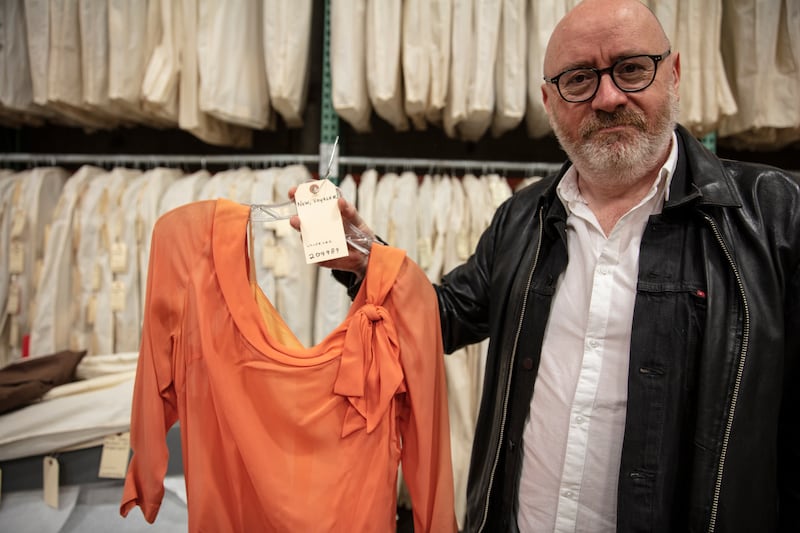
As the 1930s faded into the war years, Warners, more than any other studio, was responsible for promoting the “woman’s picture”. Bette Davis in Now, Voyager and The Letter. Joan Crawford in Mildred Pierce. But those stars were preparing to strain against their chains. As early as 1936, Davis, convinced Warners was forcing mediocre films upon her, had taken a case in London against that studio. The judgment went against her.
“Bette Davis said she lost the battle, but she won the war,” Feltenstein says. “Because when she came back … she came back to better scripts, which is what she wanted all along.”
That case also prepared the way for a successful tilt against the system by Olivia de Havilland. I am rooting amiably through a display of old photographs, vintage microphones and meticulously preserved posters, when I come across copies of correspondence relating to that actor. Here is a 1938 memo to Jack Warner concerning her behaviour on the set of Michael Curtiz’s Four’s a Crowd. “Curtiz finished shooting at 6.45 PM Saturday night because Olivia de Havilland walked off the set and refused to do any more work,” it reads. A full five years later, Warner writes to a an associate: “The Olivia DeHavilland [sic] situation is a very serious matter and I want to talk to you in person about this today.” That very De Havilland won a case that allowed her and other actors to break free of their contracts.
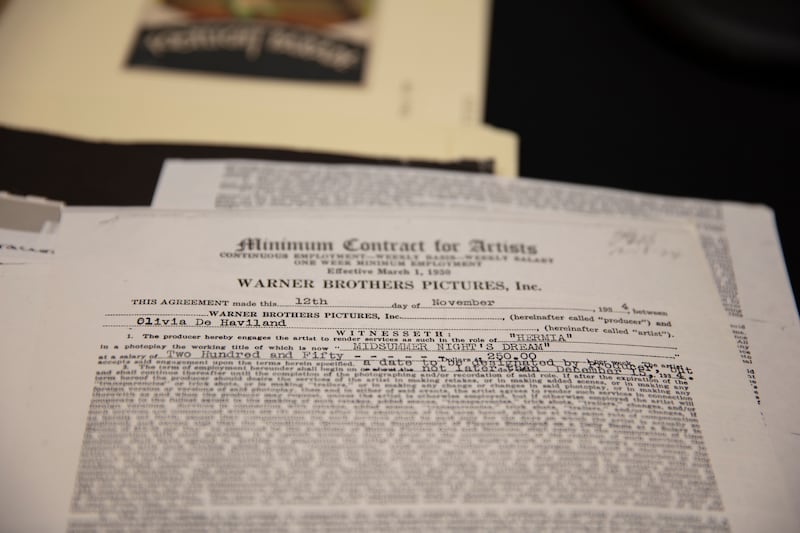
Next to the pile of correspondence there sits something around which I feel nervous exhaling ordinary human air.
“Can I pick this up?” I ask.
Nobody objects. Nobody suggests I put on those white fabric gloves they wear in genealogy programmes on the telly. It is the editor’s own script of Curtiz’s Casablanca. The original. The pages – of differing colours, as is still the norm – are unbound in an everyday grey-blue folder. Copious pencil notes look to take in shot composition, but they also include additions and alterations to dialogue. Here on a pink page is Rick confronting Sam as he warbles “As Time Goes By” to Ilsa. “I’ve told you …” the typed dialogue says. “Never to play …” the handwritten annotations complete. Just like that. As if someone had scrawled “God created the heaven and the earth” after the first three words of the King James Bible.
I feel as if I should do something sacerdotal with this document. But what? Give it a gentle kiss? Make the sign of the cross over it? Better just move over here and admire the original costumes from Rebel Without a Cause.
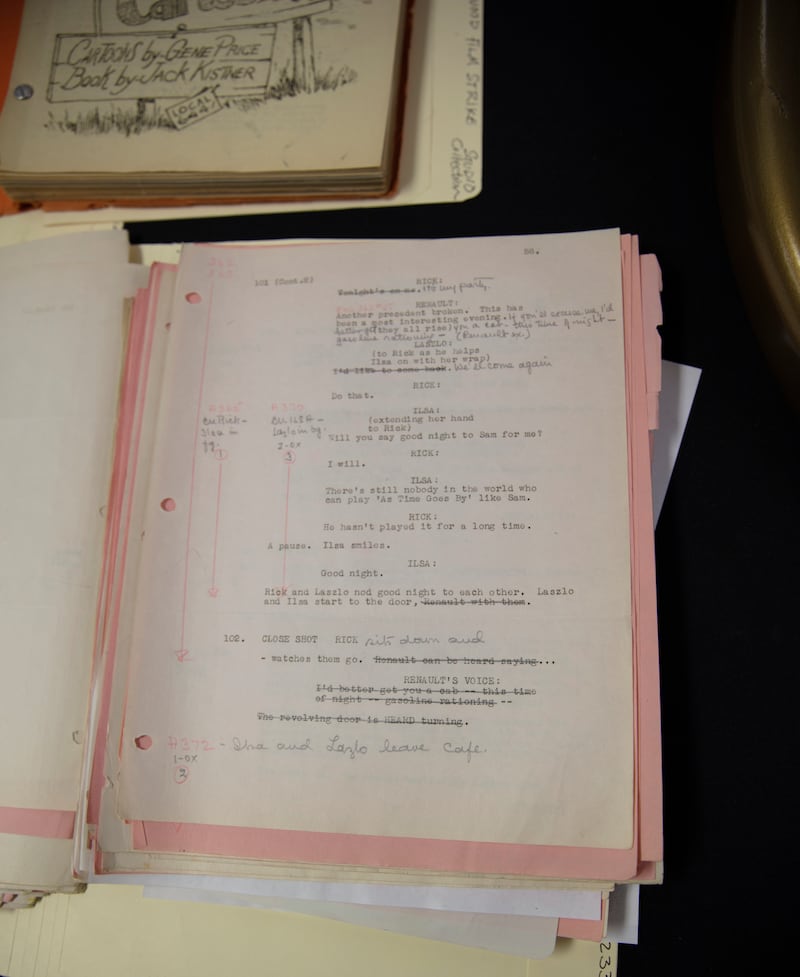
Ooo, look how small they seem. James Dean’s red bomber jacket and blue jeans seem oddly insignificant, but these are the garments that, more than any others, persuaded the world to stop dressing like their parents once they passed the age of majority. Here are the original tablets that acted as titles for Howard Hawks’s Land of the Pharaohs. Here is a cowboy hat autographed by Errol Flynn and Humphrey Bogart. I could probably put it on if I asked. But I don’t.
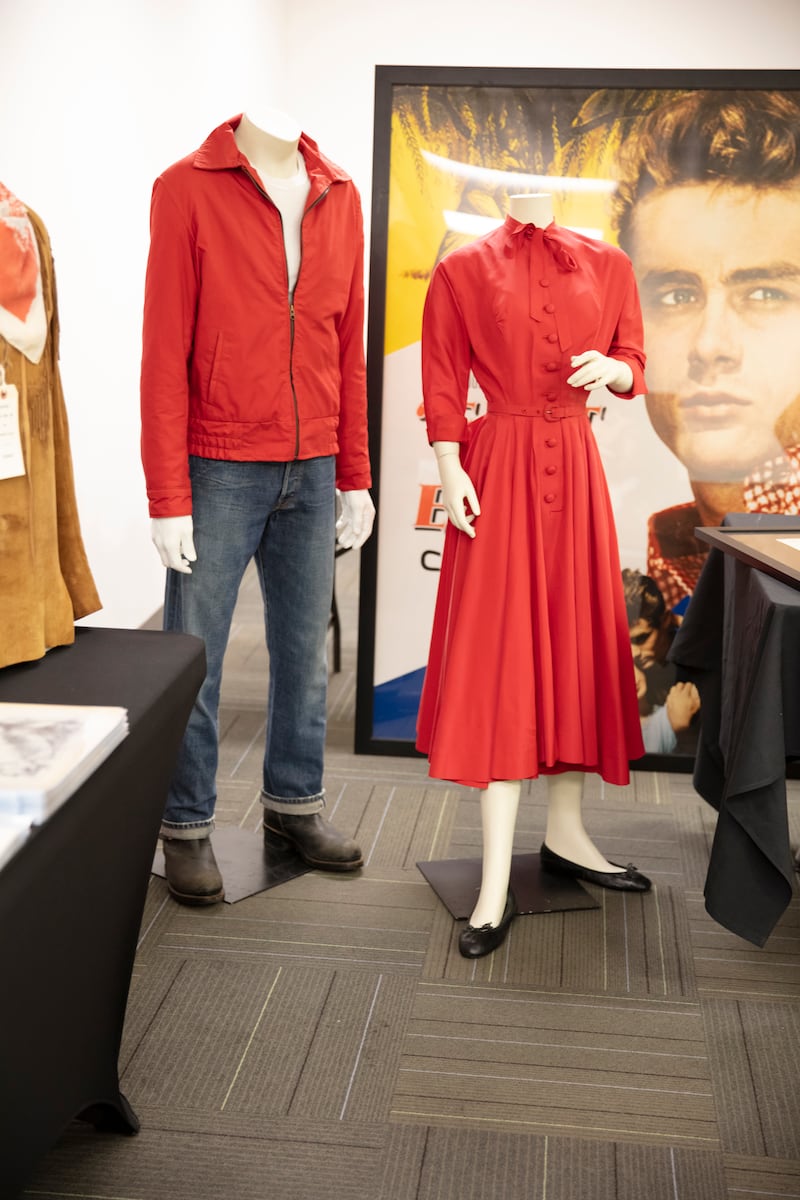
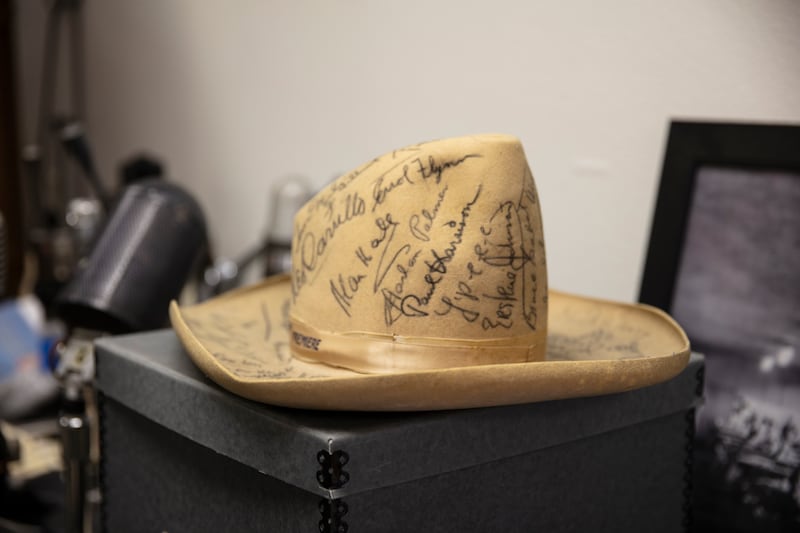
Further along, we get a sense of how Warners – and Hollywood generally – changed in the late 1960s. Feltenstein has dug out some correspondence from a still-upright Jack Warner concerning the production of Bonnie and Clyde in 1966. This was one of the films that woke the industry up to new voices and precipitated the lunge into a post-classical aesthetic. But Jack wasn’t having it. “I finished reading Bonnie and Clyde and can’t understand where the entertainment value is in this story,” he writes. “Who wants to see the rise and fall of a couple of rats? Am sorry I did not read the script before I said yes.”
Feltenstein recalls working with Warren Beatty, producer and star of the film, on the 40th anniversary. “He was a wonderful person,” he says. “He was telling me about his fights with Jack Warner. ‘This is like the pictures we made with Cagney almost 40 years ago. Who wants to see this?’ Warren Beatty was very resolute. ‘Look whose the initials are up on that water tower. Mine!’ Ha, ha!”
Wandering around the wider archives beyond the display Feltenstein has laid out, one gets a sense of the vast clutter of eras and influences that make up the Warners story. Racks and racks of garment bags contain costumes from the golden age, the uncertain 1950s, the revolutionary 1960s and the eclectic chaos that follows. They are all carefully logged. If someone needs to find a dress it can be tracked down instantly. But a garment from, say, the 1990 remake of Stella Dallas – the one with Bette Midler – sits in the same bag as another from Mervyn LeRoy’s 1956 melodrama The Bad Seed (and Stella, as my guide points out, wasn’t even a Warners picture). It seems random.
“Our system has the number and rack location listed,” Feltenstein says. “It’s the same with our film element. You’ll see the negative for Hong Kong Phooey next to the negative for 2001: A Space Odyssey.”
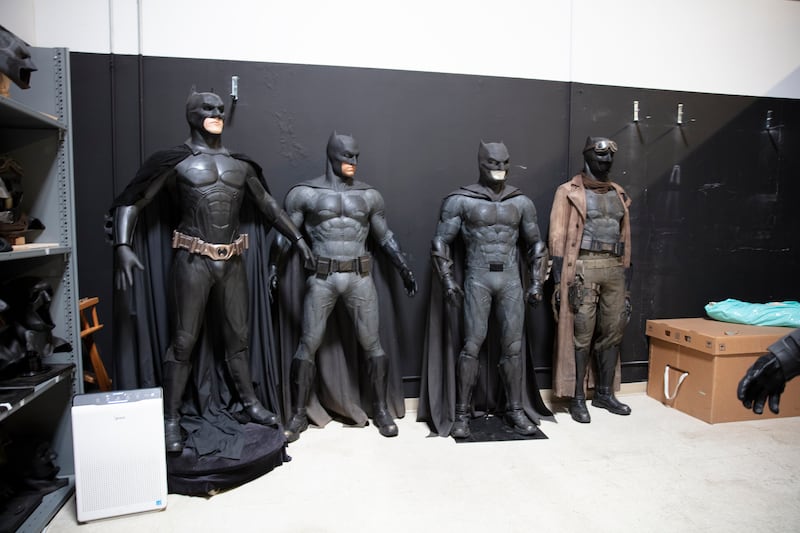
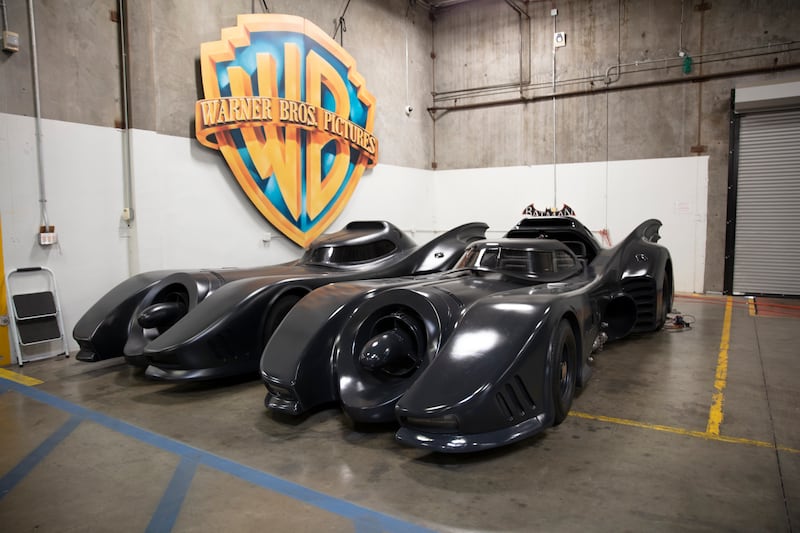
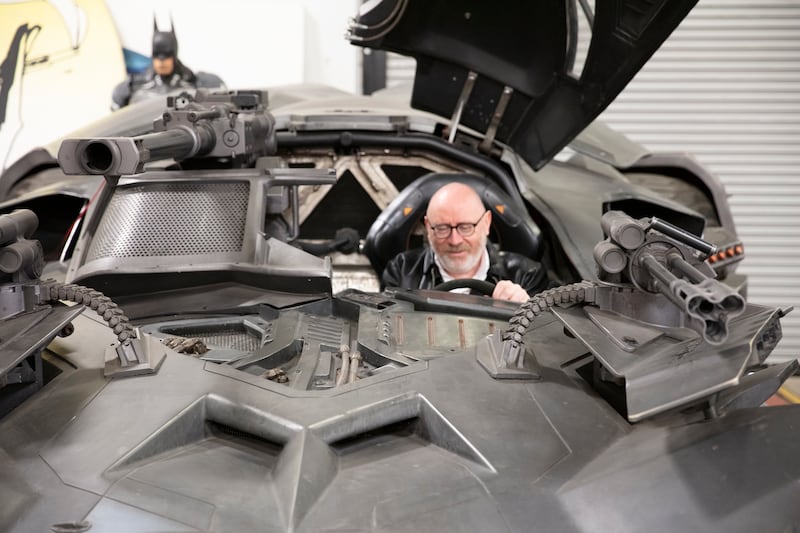
As we move into the wider space, we are confronted enormously by one figure who has done much to keep the studio buoyant over the last few decades. An array of Batmobiles is parked neatly along one wall as if that franchise had embraced a vehicular Meta-Verse. Sadly, the Corgi car I had as a boy is not in the Bat-park, as Adam West made his 1960s Batman series with 20th Century Fox. But I manage to look tolerably enthusiastic as I climb into the tank driven more recently by someone called Ben Affleck. Elsewhere, the Meta-Verse stretches to a room – or do I mean cave? – stuffed with Kilmer-cowls, Keaton-boots and, of course, Clooney-nipples. All the bat-suits are here. More exciting still, we open a door to find two of the eponymous mischief makers from Joe Dante’s immortal Gremlins. One still has the head piece that attached to … is puppeteer the word here?
All of which is fun, but, often, it’s the smaller things that reveal how assiduously the production teams assemble the imagined worlds within which contemporary blockbusters operate. Feltenstein has dug out the personal files for Thomas Anderson, played by Keanu Reeves in The Matrix. Here is a photocopy of his social security card. Here are his bank statements. Almost none of this information was seen in the film, but it was all there should The Wachowskis desire the relevant page to be turned.
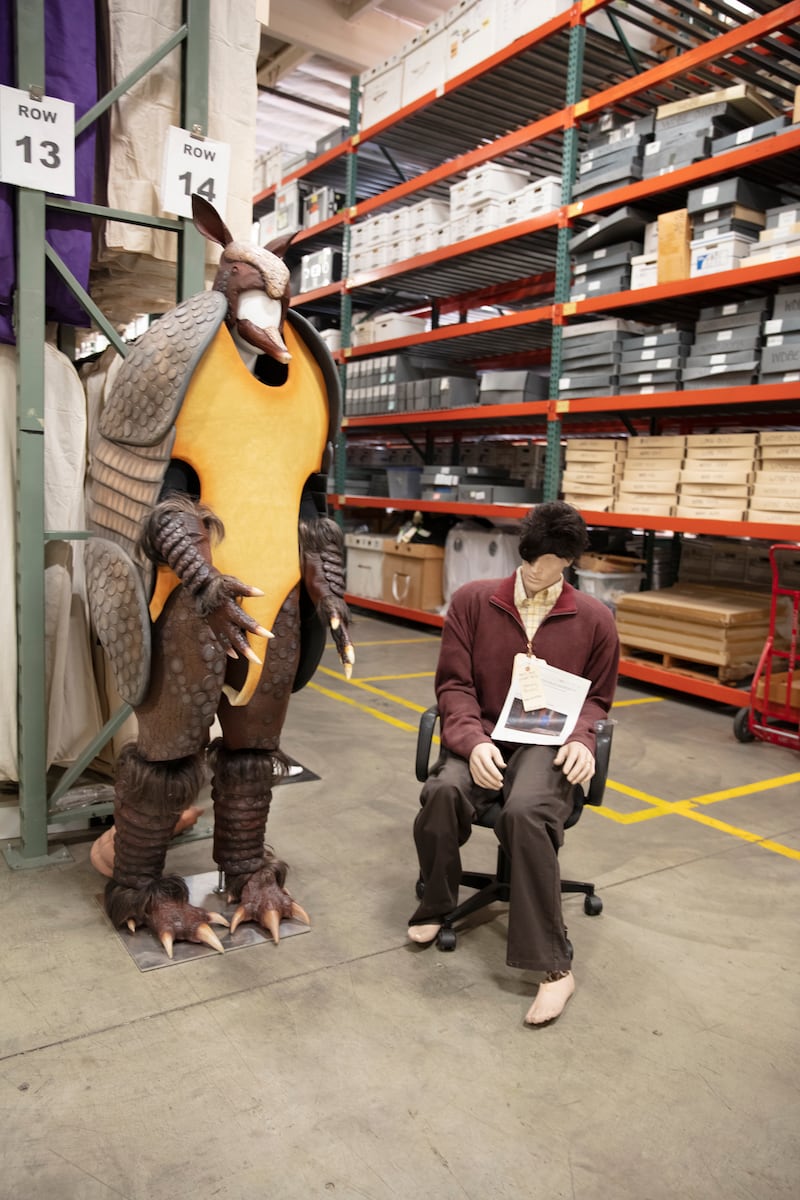
Relics from Warners’ television production are scattered about the warehouse. Propped up nowhere in particular is a “Stars Hollow” sign from the lovely millennial series Gilmore Girls. Over there is the “holiday armadillo” from Friends. In the earlier room, Feltenstein has set the original script for the Friends pilot, then called Six of One – complete with Polaroids of a young Jennifer Aniston – beside the troll doll that Monica and Ross transformed into the Geller Cup.
All of which goes some way to confirming what a studio must become if it is to survive so long as Warner Bros. Somewhere along the line, all the big movie makers – not least Warners’ Burbank neighbours Disney – mutated into larger, more diverse media enterprises. We have travelled far from the golden-age films whose names appear on boxes and bags amid the busy shelving. Calamity Jane. Auntie Mame. Mildred Pierce. Now Voyager.
Hang on. Now Voyager? One of my very favourite films. Sitting on a shelf near the entrance, a box promises Bette Davis’s shoes from that indestructible 1942 melodrama. Sure enough, I am looking at the black-and white numbers that, as part of a toe-to-hat camera move, tell us Charlotte Vale has made her transformation from repressed duckling to elegant swan. The actual shoes. Looking pretty much as they must have done when Davis strode down the gangplank towards Paul Henreid.
I am aware that I’m becoming indecently emotional. Maybe even blubby; I wonder if George Feltenstein ever gets blase about all this. Does the excitement ever wear off? Oddly, he uses almost exactly the same words as Neil Jordan.
“No, every day it still overwhelms me,” he says. “Every day going to work on the lot it’s like hallowed ground. I never become the least bit casual about it. It’s awesome. Every day is a new adventure and a new discovery. And that’s a wonderful thing.”


